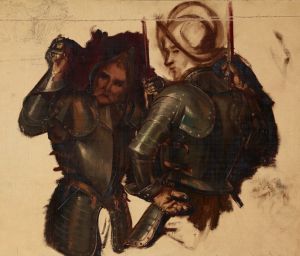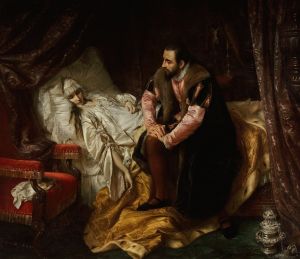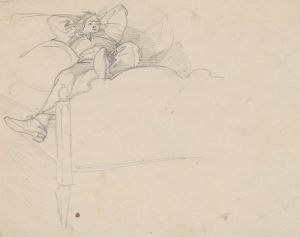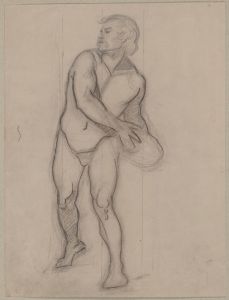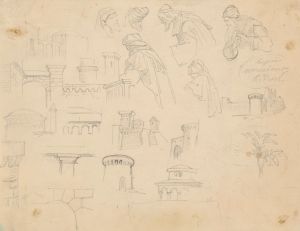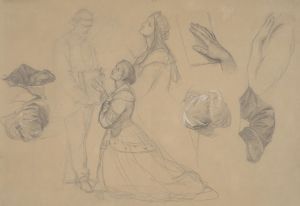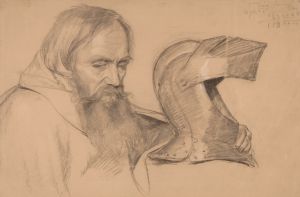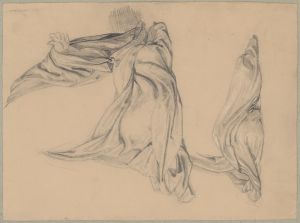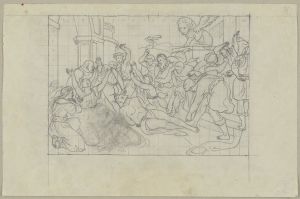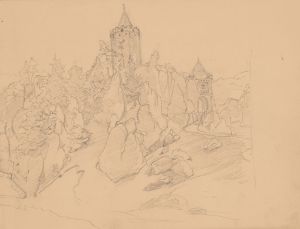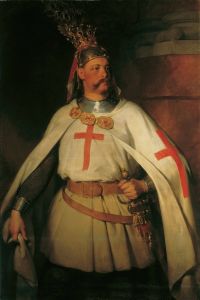
Sketch of the king figure for the painting ‘Death of Barbara Radziwiłł’
A hand-painted replica of Józef Simmler’s masterpiece Sketch of the king figure for the painting ‘Death of Barbara Radziwiłł’, meticulously crafted by professional artists to capture the true essence of the original. Each piece is created with museum-quality canvas and rare mineral pigments, carefully painted by experienced artists with delicate brushstrokes and rich, layered colors to perfectly recreate the texture of the original artwork. Unlike machine-printed reproductions, this hand-painted version brings the painting to life, infused with the artist’s emotions and skill in every stroke. Whether for personal collection or home decoration, it instantly elevates the artistic atmosphere of any space.
Józef Simmler, a prominent Polish painter of the 19th century, is renowned for his historical and genre paintings. One of his most famous works is "Death of Barbara Radziwiłł," completed in 1860. This painting captures a poignant moment in Polish history, focusing on the tragic figure of Barbara Radziwiłł, the second wife of King Sigismund II Augustus of Poland. The painting is celebrated for its emotional depth and historical accuracy, reflecting Simmler's meticulous attention to detail and his ability to convey complex human emotions.
The sketch of the king figure in "Death of Barbara Radziwiłł" is a crucial element of the composition, as it portrays King Sigismund II Augustus in a moment of profound grief and vulnerability. The king is depicted at the bedside of his dying wife, Barbara, who was a member of the influential Radziwiłł family. Their marriage was fraught with political tension and controversy, as it was initially opposed by the Polish nobility and Sigismund's mother, Bona Sforza. Despite these challenges, Sigismund's love for Barbara was unwavering, and her untimely death in 1551 left him devastated.
In Simmler's painting, the king is shown with a somber expression, his posture conveying a sense of helplessness and sorrow. The artist's use of light and shadow emphasizes the emotional weight of the scene, drawing the viewer's attention to the king's face and his silent vigil by Barbara's side. This portrayal aligns with historical accounts of Sigismund's deep mourning following Barbara's death, which reportedly affected him for the rest of his life.
Simmler's attention to historical detail is evident in the king's attire and the setting of the painting. The clothing and furnishings reflect the Renaissance style of the Polish court, adding authenticity to the depiction. The artist's skillful rendering of textures and fabrics further enhances the realism of the scene, allowing viewers to immerse themselves in the historical context.
"Death of Barbara Radziwiłł" is not only a testament to Simmler's artistic talent but also serves as a visual narrative of a significant episode in Polish history. The painting captures the personal tragedy of a monarch and the political implications of his marriage, offering insight into the complexities of 16th-century Polish society. Through the figure of the king, Simmler explores themes of love, loss, and the burdens of leadership, making the work resonate with audiences both in his time and today.
The painting remains an important cultural artifact, housed in the National Museum in Warsaw, where it continues to be admired for its emotional impact and historical significance. Simmler's portrayal of King Sigismund II Augustus stands as a powerful reminder of the enduring human experiences of love and grief, transcending the specific historical moment it depicts.





